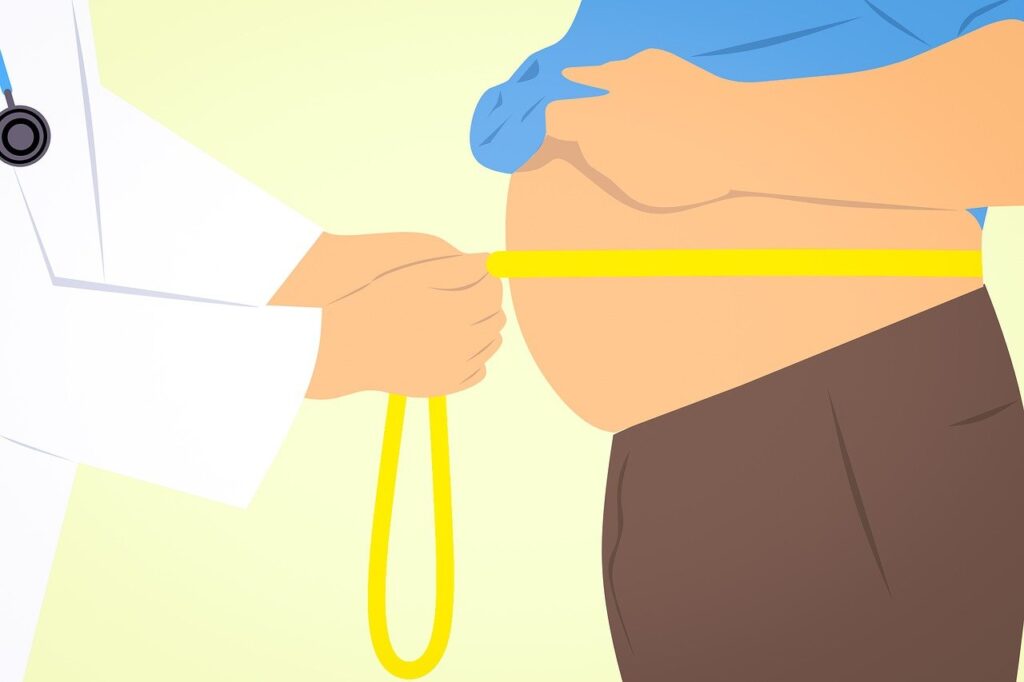
In this article, we will delve into the topic of it, understanding its definition, prevalence, causes, and associated health risks. We will explore the diagnosis and classification of it according to the International Classification of Diseases, Tenth Revision (ICD-10). Additionally, we will discuss various treatment options, strategies for managing it, and preventive measures. Let’s unlock the secrets of it and gain valuable insights based on ICD-10 guidelines.
H1-Introduction
Understanding Morbid Obesity

Definition of Morbid Obesity
It is a term used to describe a severe form of obesity characterized by excessive body weight that poses significant health risks. It is important to distinguish it from general obesity, as it requires specialized medical intervention for effective management.
Prevalence and Impact
It has witnessed a substantial rise in prevalence globally. It affects individuals of all ages, ethnicities, and socioeconomic backgrounds. The impact of it extends beyond physical health, leading to psychological and social consequences that can diminish overall quality of life.
H2-Causes and Risk Factors
Genetic Factors
Genetic factors play a significant role in the development of obesity. Certain gene mutations and variations can influence an individual’s predisposition to weight gain and difficulty in losing weight. Additionally, a family history of obesity can increase the likelihood of obesity.
Environmental Factors
The environment in which we live has a profound impact on our weight and health. Factors such as access to healthy food options, sedentary lifestyles, and the prevalence of high-calorie processed foods contribute to the development of obesity. Addressing environmental factors is crucial in combating the obesity epidemic.
Lifestyle Factors
Unhealthy lifestyle choices, including poor dietary habits, lack of physical activity, and sedentary behaviors, are key contributors to obesity. The modern sedentary lifestyle, coupled with the availability of calorie-dense foods, has contributed to the rise in obesity rates worldwide.
Health Risks Associated
It significantly increases the risk of various serious health conditions, including cardiovascular diseases, type 2 diabetes, sleep apnea, and joint problems. The excess weight places excessive strain on the body, leading to systemic inflammation and metabolic disturbances.

H3-Diagnosis and Classification of Morbid Obesity According to ICD-10
ICD-10 Criteria
The ICD-10 coding system provides criteria for the diagnosis and classification of obesity. Healthcare professionals utilize these codes to accurately identify and track cases of it, enabling standardized reporting and effective management.
Body Mass Index (BMI) Calculation
Body Mass Index (BMI) is a commonly used tool to assess obesity levels. In the context of it, a BMI of 40 or higher indicates the presence of it. Additionally, individuals with a BMI of 35 or higher, accompanied by obesity-related comorbidities, may also be classified as having it.
H4-Treatment Options for Morbid Obesity
Various treatment options are available for individuals with it, ranging from lifestyle modifications to medications and bariatric surgery.
Lifestyle Modifications
Lifestyle modifications, including adopting a healthy eating plan, increasing physical activity, and making sustainable behavioral changes, are the cornerstone of it management. These changes promote weight loss, improve overall health, and reduce the risks associated with ity.
Medications
In some cases, healthcare professionals may prescribe medications to assist with weight loss in individuals with it. These medications work by suppressing appetite, increasing feelings of fullness, or inhibiting the absorption of fat. However, medication alone is not a long-term solution and should be used in conjunction with lifestyle modifications.
Bariatric Surgery
Bariatric surgery is a surgical intervention recommended for individuals with severe obesity who have not achieved success with other treatment modalities. Procedures such as gastric bypass, sleeve gastrectomy, and gastric banding can help individuals achieve significant weight loss and improve obesity-related comorbidities.
H5-Managing
Managing it requires a comprehensive and multidisciplinary approach. Supportive care, behavioral therapy, and regular follow-up and monitoring are key components of successful management.
Supportive Care
Supportive care includes psychological counseling, nutritional guidance, and support groups. These resources assist individuals in overcoming challenges, addressing emotional factors related to food, and providing a supportive network for long-term weight management.
Behavioral Therapy
Behavioral therapy focuses on identifying and modifying unhealthy behaviors and thought patterns related to food and physical activity. It helps individuals develop strategies for stress management, emotional eating, and improving self-esteem. Behavioral therapy plays a crucial role in long-term weight management.
Follow-up and Monitoring
Regular follow-up appointments with healthcare professionals are essential for individuals with it. These appointments allow for progress monitoring, adjustment of treatment plans if necessary, and ongoing support and guidance to ensure sustainable weight loss and overall health improvement.
H6-Prevention Strategies
Preventing it is key to reducing its prevalence and associated health risks. Implementing the following strategies can help individuals maintain a healthy weight and prevent the progression to morbid obesity.
Healthy Eating Habits and Morbid Obesity
Adopting healthy eating habits, such as consuming a balanced diet rich in fruits, vegetables, whole grains, and lean proteins, is crucial in preventingit. Avoiding excessive calorie intake, sugary beverages, and processed foods helps maintain a healthy weight.
Regular Physical Activity and Morbid Obesity
Engaging in regular physical activity is essential for preventing ity. Aim for at least 150 minutes of moderate-intensity aerobic exercise or 75 minutes of vigorous-intensity exercise each week. Incorporating strength training exercises can also help build muscle and boost metabolism.
Weight Management Programs and Morbid Obesity
Weight management programs that combine nutrition education, exercise guidance, and behavioral support can be beneficial in preventing it. These programs provide structured approaches to weight loss and long-term weight maintenance.

H7-Conclusion
In conclusion, understanding the secrets of it is crucial for addressing its impact on individuals and society. By recognizing its causes, associated health risks, and available treatment options according to ICD-10 guidelines, we can take proactive measures in combating it. Through lifestyle modifications, appropriate medical interventions, and preventive strategies, we can unlock a healthier future.
H8-FAQs (Frequently Asked Questions)
According to ICD-10
- What is the difference between obesity and morbid obesity according to ICD-10?
- Can morbid obesity be reversed without surgery according to ICD-10?
- Is morbid obesity a lifelong condition according to ICD-10?
- What are the potential complications of bariatric surgery for morbid obesity according to ICD-10?
- Are there any alternative treatments for morbid obesity according to ICD-10?
Here are some popular websites and institutes related to “Morbid Obesity with ICD-10” along with their corresponding links:
- Obesity Medicine Association (OMA) – https://obesitymedicine.org/
- American Society for Metabolic and Bariatric Surgery (ASMBS) – https://asmbs.org/
- Centers for Disease Control and Prevention (CDC) – https://www.cdc.gov/
- National Institute of Diabetes and Digestive and Kidney Diseases (NIDDK) – https://www.niddk.nih.gov/
- World Obesity Federation – https://www.worldobesity.org/
These websites and institutes are highly reputable sources for information, resources, and guidelines related to it and its association with the ICD-10 coding system. You can visit these links to explore further information on the topic.

- Additional Information:
For any information on – Understanding: Colon Broom Reviews, Common Issues & Benefits of Colon Cleansing with 7 Natural Remedies -click here
People Also Ask
What is considered morbid obesity?
Individuals are usually considered morbidly obese if their weight is more than 80 to 100 pounds above their ideal body weight. A BMI above 40 indicates that a person is morbidly obese and therefore a candidate for bariatric surgery.
What is the best treatment for morbid obesity?
For patients with a body mass index (BMI) over 40, the health care team may recommend an obesity treatment known as bariatric surgery, or weight loss surgery. Bariatric surgeries work to either restrict the amount of food intake, limit food absorption in the small intestine, or a combination of the two.
How many kg is morbidly obese?
In adults, a BMI of 25kg/m² to 29.9kg/m² means that person is considered to be overweight, a BMI of 30kg/m² or higher means that person is considered to be obese. A BMI of 40kg/m² or higher means that person is considered to be morbidly obese. May 8, 2019.
Is morbid obesity serious?
Morbid obesity is not a sign of weakness, laziness or gluttony. It is a serious medical condition with serious medical consequences. Current research suggests that many factors work together to influence your weight.
Can morbid obesity be cured?
Among the morbidly obese, less than 5 percent succeed in losing a significant amount of weight and maintaining the weight loss with non-surgical programs — usually a combination of dieting, behavior modification therapy and exercise.
How to reduce BMI from 40 to 25?
How To Lower BMI
- Reduce your calorie intake to prevent gaining weight. This is the most basic strategy for lowering your BMI level. …
- Exercise. Exercise generally boosts your metabolism, which in turn, burns calories and causes weight loss. …
- Enhance your diet. …
- Drink more water. …
- Get enough sleep.
Is it possible to lose weight Without surgery?
Medical weight loss empowers you to lose weight without surgery, by changing your relationship with food by eliminating harmful eating habits and adapting a healthier lifestyle.
How long can you live with morbid obesity?
Some researchers have determined that, in those who are extremely obese, life expectancy may be reduced by an estimated five to 20 years.Apr 16, 2023


This is my first time pay a quick visit at here and i am really happy to read everthing at one place
Thank you so much for your kind words and positive feedback! Your encouragement means a lot. Kindly share this with your references, emphasizing the health benefits that can come from fostering a positive and supportive environment. Together, we can inspire well-being.
Best regards,
Team Leadingbythoughts
I just like the helpful information you provide in your articles